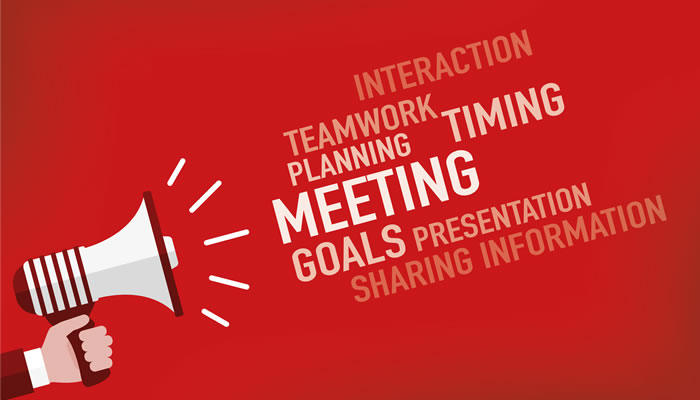
8 Meeting Strategies to Ensure Successful Business Meetings Every Time
As a successful business person, you need to ensure the meetings you lead are always productive. Unfortunately, it’s not hard to get a bad rap after just one meeting that went off track.
Being able to lead productive, informative and successful meetings is a well-respected skill to have in today’s business world.
After following these eight effective meeting strategies, you will have the tools and knowledge needed to lead successful business meetings every time:
-
Be prepared.
Being prepared in advance of a meeting is key to helping things go smoothly. Here’s some tips:
- Determine and book the meeting location before you invite anyone.
- Ensure you have a minute-taker available; ask for a volunteer prior to the meeting.
- Invite only those that need to be there. If you invite people that don’t particularly need to be there, it wastes their time and they will find excuses to skip the next one.
On the other hand, if they come to your meetings and feel as if it was relevant and time well spent, they will regard your meetings as productive and participate fully. - Include the purpose for the meeting when you send the invitation. If your employees or co-workers know what the meeting is about, they can mentally prepare and will be more likely to participate.
Moreover, they will be more likely to attend if you are upfront with the meeting’s purpose and what their role will be at it. - Send the meeting invitation well in advance. This allows attendees to keep that time slot open. It will also allow you time to rebook if the attendance availability is too low.
- Arrive early and have everything set up before people get there. Nobody likes to feel as if you don’t take their time seriously. If you have everything set up before they get there, they will feel welcomed and relaxed.
-
Create a clear objective.
Determine what you need to cover during the meeting and stick to that objective. Include allotted time per issue in the agenda, such as 10 minutes to discuss the overall project plan, 5 minutes to discuss budget concerns, etc.
-
Send a reminder.
Send out a meeting reminder at least one day in advance. Remind your attendees of the objective and ask them for input.
Asking for their input will help them prepare mentally and allow them time to think of relevant questions or concerns.
And of course, a reminder will ensure nobody forgets. -
Prepare an Agenda.
This is imperative. Print a hard copy for each attendee and place it at each seat.
When they sit down, it will give them something to look over, refresh their memory and help to keep the meeting on track.
Preparing an agenda also shows you were prepared; this will gain immediate respect and gratitude from your peers. -
Lead with Confidence.
You asked for the meeting, you need to take command and lead it. Open the meeting promptly, facilitate the content and close the meeting within the allotted timeframe.
A good leader will know when a topic has gone too far off track and bring it back. If there is someone that is talking too much or pulling away from the objective, politely but firmly acknowledge their input and tell them you will include it in the minutes and come back to the topic if there is time at the end.
Have a flip chart or dry erase board to use as a “parking lot” for ideas that come up outside of the agenda. You will add those to a future meeting so that they don’t get forgotten and you can keep the current meeting on track.
A productive leader will also be able to read the attendees and steer the meeting in a somewhat new direction if necessary. If one of the topics seems to have taken a negative undertone, take control with a positive message and move on.
If there is a topic that has been left unresolved due to conflicting ideas of co-workers, let them know you will work on a resolution after the meeting and then follow up. -
Stay on Track.
You wrote the agenda, now make sure you follow it as closely as possible.
It is a good idea to state each new agenda item as you come to it. Doing this will allow your attendees to follow along with something visually and not feel lost.
If you stay on track, you will close the meeting at the specified time. Doing this will give you credibility, establishing yourself as an effective meeting leader. -
Include Action Items.
If you already know what you would like the action items to be, include them in the agenda.
You can assign them during the meeting and cover what’s expected in detail.
If you don’t have pre-determined action items, allow time for you to include and discuss the action items that come up. -
Follow up.
Send an email with the minutes within 24 hours. Minutes should include the summary with key decisions and outstanding issues needing to be resolved.
And always end on a positive note, thanking them for their time.
Planning and preparing an effective meeting may seem daunting but once you know the key elements, you just need practice to pull business meetings off like a pro.
If you want to learn more ways to lead effective meetings, let’s connect with a free strategy session to get acquainted and ensure you never have another unproductive meeting!
Business Leadership, Team Management